Sega in Mauritius
This text provides an overview of Sega, the traditional music of Mauritius island known as ’the blues of the Indian Ocean’.
 Photo: www.suggest-keywords.com
Photo: www.suggest-keywords.com
Early origins
From the 17th to the 19th centuries, slaves from Africa and Madagascar, transported against their will to Île de France, now known as Mauritius, gradually forged their own identity in this land of exile. Improvised music and dancing to night fires would help these uprooted souls forget the harsh conditions of their lives.
Songs and rhythms from West Africa, Mozambique, Zanzibar or Madagascar would resound until dawn. From these diverse African influences mixed with the influx of polka and quadrilles from Europe sprang a new, insular dance and music, the séga.
The ravanne is inseparable from séga. A percussion instrument made from a goat skin (“lapo cabri” in Créole) strung over a wooden circular frame, it resembles a large drum spanning a diameter of 30 to 70cm. The ravanne has particular playing characteristics.
Unlike most other frame drum percussions, it is struck with both hands. Since the skin of the ravanne has to be struck vertically (as opposed to conga or bongo), the ravanne drummer (“ravannier”, “tanbourié” or “tanbouyé”) plays either sitting down, crouched or standing with one leg slightly higher to keep the ravanne positioned on the thigh, leaving both hands free to play. Players also have to regularly warm their ravanne, the skin needing to remain tight for the instrument to resound. After a few songs, it has to be tightened again as the skin loosens, weakening the sound. This was why séga was traditionally played around a big bonfire.
Séga is always accompanied on the ravanne but also on two other traditional instruments: the maravanne, a thin rectangular box made out of shoots of dried sugar cane flowers and filled with dried seeds, which gives the rhythmic, high-pitched sound of the séga; and the triangle, an iron bar bent in the form of a triangle and played rhythmically with a little metal rod.
Ravanne, maravanne and triangle are the three basic instruments of séga ravanne, the typical séga (“séga tipik”) of Mauritius. The exact origin of this percussion has never been able to be traced. Some say that the word ravanne is of Tamil origin while others affirm that the word ‘séga’ comes from the tchega, a dance of Mozambique or from the Swahili word ‘séga’.
Contemporary ravannier Menwar recalls: “All those old people in Cassis, you could hear words in their music… We used to call it “kid goat talk”. Why? Because words are magic.
They would make their ravanne from a circular wooden frame and a goat skin but they would add three holes in the frame each fitted with three little metal rings. At the time they were using five cent pieces. They used this instrument for ceremonies, “services” they used to call them. When they played they would go into a trance and someone possessed by Babani could bang his head on a wall and feel nothing – that’s what the instrument was about.”
A marginalised music
Early settlers and missionaries disapproved of the evenings when slaves would let themselves go to the early sound of the ravanne. For them, the dancing was too erotic, the rum too rife and the fighting too frequent. For the slaves, however, this was the best way to forget their week of hardship in the sugarcane fields and on the colonial properties. They gathered after sunset around a bonfire and would make up Creole riddles (sirandanes), and sing and dance all night to rhythms which had been their own in their African homeland. The music was frowned upon and even banned by the Catholic Church and the colonial authorities.
Séga began to lose its ritualistic character around the early 1900s, instead becoming more of a vehicle for improvised song, using Créole language to create plays on words, double entendres and onomatopoeia, all indispensable aspects of the genre. After the abolition of slavery, the black population formed settlements on the banks of the Rivière Noire and in Mahebourg. Here, ancient séga took the form of a drum call followed by a main theme, generally sung by a woman, which the chorus repeated, building in energy and stimulating dancers.
Meanwhile, black and mixed-race musicians who still moved in the circle of white land-owners while living in their villages developed a more “civilised” form of séga, mixing traditional elements with European instrumentation, which began to be performed at parties or to honour guests.
Later, Indian percussion instruments like the dholok and the tabla were incorporated into the music, giving rise to séga bhojpuri (or séga chutney and séga bollywood). Other variants developed organically: séga ravanne to séga salon, séga pop, séga zouk, séga disco and seggae, a fusion of séga and reggae played by the Rastafarian community spawning artists such as Kaya and Racinetatane; séga folk to protest séga or séga engazé, with artists like Bam Cuttayen, Grup Latanier and Soley Ruz all infusing a powerful social message into their music.
All of these séga variations followed international trends and evolved from the traditional acoustic séga, the “séga tipik”. On neighbouring islands, séga also thrived in new ways, becoming popular as séga tambour and séga kordéon in Rodrigues, as séga and maloya on Reunion Island and as moutia in the Seychelles.
The Ti Frère effect
Forbidden for many years by colonial authorities and the Catholic Church, it was only in the 1950s that séga began to be played at private parties for the white aristocracy, hosted by the legendary Ti Frère.
Born Joseph Alfonse Ravaton, Ti Frère had learnt séga and ballads through accompanying his father, himself a renowned séga musician, and cut his teeth playing at “Zarico” dances in the courtyards of people’s homes. He would be booked for parties, beach picnics and drinks after shooting parties. His reputation grew through local “pariages séga” contests in different villages, all night sessions where the audience and dancers alone would judge the winner.
Ti Frère became a local hero and he recorded the first 45rpm vinyl record ever released in Mauritius in 1948. He would achieve national fame after 30 October 30 1964, known as ‘Night Of The Séga.’ Held on Mt. Le Morne, the Creole community used the gathering to re-assert its cultural identity and it was a benchmark event. Thereafter, séga became more accepted as an artform across the island and Ti Frère was crowned ‘King Of Séga’. He added the diatonic accordion to the traditional ravanne, maravanne and triangle accompaniment and became a master of spontaneity, telling stories of the ups and downs of Mauritian life through his music.
According to writer and professor JMG Le Clezio, “The voice of Ti Frère has an edge and a hiss, grinning and derisive, shouting, rasping and groaning. It threatens and then becomes sweet and tender. It is a link with deepest Africa. His séga is tough and true, sensual and pagan.”
National acceptance
While Ti Frère discreetly revived the séga in private circles during the 1950s, Serge Lebrasse was another important figure in taking the music from the shadows into the limelight. Aged 15, he moved with his family from the town of Rose-Hill to Quartier Militaire, the village where Ti Frère lived. He later recalled: “I was his neighbour and was amazed when I saw him with his friends after work at the local Chinese grocery shop, chatting, drinking rum and singing séga in Créole. Although he was 30 years older than me, we started a friendly relationship. He then started bringing me to private deer-hunting parties that ended always in séga.“
After a spell in the British Army during the late 1940s, Lebrasse became a primary school teacher. His superior noticed that he had a good voice and sent him to study music with the local Police Band, where he composed his first séga songs. “At an event at the Plaza theatre, suddenly the bandmaster asked me to sing my séga. When I finished, to my great surprise, the public were clapping and shouting! After the concert, John Venpin, a Chinese shopkeeper who just launched Dragon Records, came to see me and asked me to record the song.
There was no studio at that time, so we recorded in Mr Venpin’s house in China Town in Port-Louis. Instantly the record became a hitm, even if séga was still quite taboo at that time. The middle class Créoles snubbed this music, but after a few weeks, thanks to the record, my song ‘Madam Eugène’ was heard everywhere.” Released in 1957, ‘Madam Eugène’ was the first major séga hit and conquered the whole island.
By the mid-1960s, séga had become a symbol of national pride and identity for Mauritius. A new generation started singing it and the Dragon label recorded most of séga’s future stars, including Roger and Marie-Josée Clency, Alain Permal and Georgie Joe.
With the advent of electric instruments (drums, synthesizer, bass guitars, electric guitars), the influx of funk, soul and jazz from the West and the growth of long playing records, séga went commercial, using even more upbeat dance rhythms. As the influence of pop, funk and jazz music changed worldwide music scenes during the 1970s, séga started incorporating rhythms and arrangements from these genres. Dancefloors started grooving to the sound of a more soulful, funky séga beat. Bands started using amplifiers, keyboards, drums and electric guitars
Séga artists popped up all over the island with a new generation of charismatic singers becoming national stars. Séga, sung in Créole, became the national music of Mauritius, uniting all the communities of the island.
Mauritians from the local European, African, Indian and Chinese communities, Hindus, Muslims, Christians - all danced and enjoyed séga. The music then spread with the same success to the other Créole islands across the region: the Seychelles, Reunion, Rodrigues and Chagos. Even non-Créole islands like Madagascar and the Comoros were dancing to a new modern séga sound.
The 1970s were the years when séga firmly grounded its roots forever in Mauritius, a time when séga records were sold alongside Elvis Presley LPs, Cliff Richard, the Beatles, the Rolling Stones, Deep Purple, Otis Redding and James Brown. This was the golden age of séga music.
Séga dance
Séga is typically danced by couples without contact between the men and women. Hips swing, arms are raised and feet sweep the floor as they take lateral steps. Often in the middle of the dance, the couple crouch down on their knees. Their busts meet and they lean over onto each other, taking it in turns to dip over backwards in an erotic manner, a step called the ‘en bas en bas’ (‘down low’).
Nowadays, mainly on weekends, Mauritians often get together around a beach fire to play, sing and dance séga. This involves dancing with the two feet close to each other, echoing the origins of the séga dance during the days of slavery when dancers couldn’t lift their feet from the ground because of the chains they wore.
Séga today
Despite all of the instrumental and rhythmic developments in séga, the ravanne still survives, thanks to veterans like Fanfan, Serge Lebrasse, Marclaine Antoine and Michel Legris. Among the contemporary artists in Mauritius, Menwar has given the instrument a new lease of life.
The quality of his percussion playing led him to create his own style, using the ravanne to explore percussion effects beyond séga rhythms. Prosper, on the neighbouring island of Rodrigues, has also reinstated traditional instruments to the youth of his quarter.
In today’s séga, the traditional ravanne tends to be replaced with a ravanne made with a synthetic skin or an African djembé. Since these skins remain taut, there is no need to warm up the instruments, making them more practical for concert halls and hotel salons. But these alternatives will never replace the distinctive sound of a taut goatskin. There are sadly few manufacturers making the traditional ravanne and goatskins are also harder to come by these days, since the breeding of kid goats is practised less and less in Mauritius.
The slaves and other immigrants who disembarked on Île de France created an insular culture that today unites all communities on the island. Their Mauritian descendants of Chinese, Indian, European and African extraction all speak the Creole language. The national dance and music of Mauritius is séga ravanne, a symbol of the island’s cultural heritage.
The ravanne will always be the representative traditional instrument of Mauritius. “It is the only instrument to have accompanied séga from its beginnings until now,” affirms Menwar. “Instruments cross-breed, like people. Once the tabla, djembé and congas made it to Mauritius, they were all introduced into séga. But the ravanne is definitely the symbol of our music, It’s our emblem, like the dodo.” As long as séga lives, the ravanne will continue to resound in this region of the South-West Indian Ocean.
Adapted from the liner notes of the compilation Soul Sok Sega (Strut Records, 2016) and republished with the permission of the author.















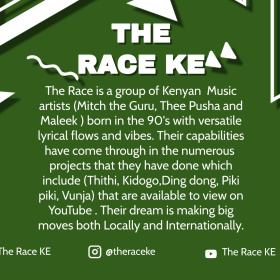




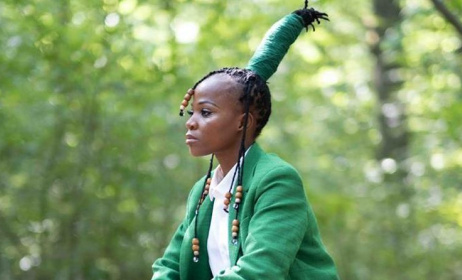



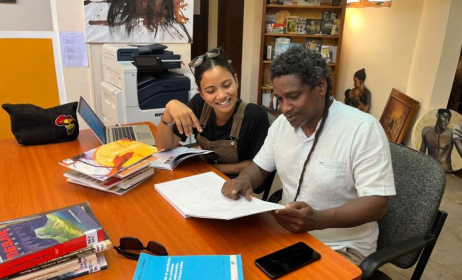
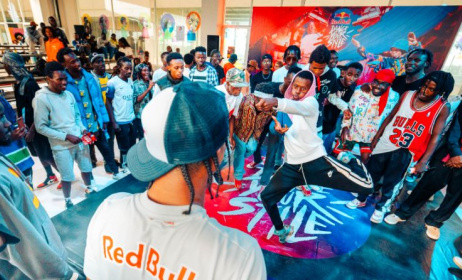


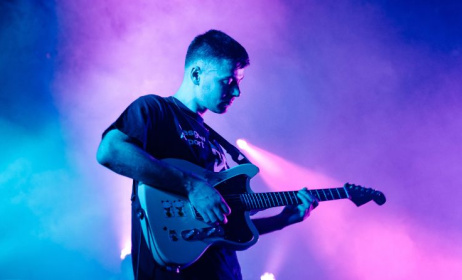
Comments
Log in or register to post comments